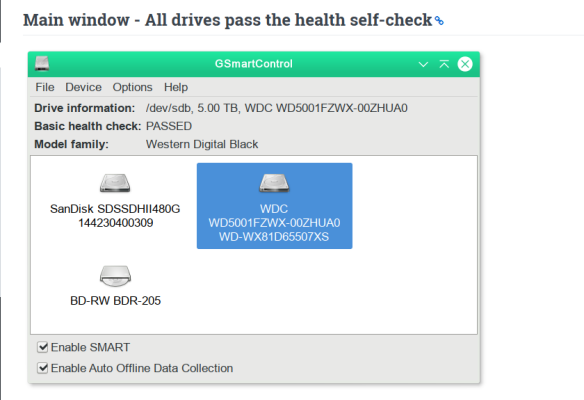No drive lasts forever. Even a brand-new, top-of-the-line one can suddenly fail — taking your photos, documents, and important files with it. The good news? There are free and simple tools that can help you catch problems early and save your data in time.
What’s Already Built into Windows
Let’s start with the basics — tools that are already part of the system.
Open Command Prompt as administrator and type:
chkdsk C: /f /rThis will scan your drive for errors and try to fix them. It works well, but can take a long time — especially if you’re scanning a large disk.
Windows also includes S.M.A.R.T. technology, which keeps an eye on your drive’s health. To see what it’s reporting, open Event Viewer and go to the System log. You can filter the messages to show only disk-related entries. If something’s starting to go wrong, you’ll often get early warnings long before things get critical.
Want something more visual? Try Performance Monitor. Press Win + R, type perfmon, hit Enter, and click the green plus to add your drive. You’ll be able to see stats like read speed and queue length.
But if that sounds too complicated — don’t worry, there are easier tools.
CrystalDiskInfo — Simple and Clear
One of the most popular tools out there. Just launch it, and you’ll instantly see your drive’s status: good, warning, or critical. The color coding is easy to follow:
— Blue — everything’s fine
— Green — still okay
— Yellow — pay attention
— Orange/Red — time to back up now
It tracks key parameters like:
— How many sectors have been reallocated
— How many are on the verge of failure
— How many errors couldn’t be corrected
If these numbers start growing — trouble may be on the way.
You can even set up email alerts to be notified if things get worse.
Just keep in mind: no tool can give a 100% guarantee. Drives can still fail suddenly. Think of CrystalDiskInfo as a helper, not a crystal ball.
HWiNFO — For Those Who Want Full Control
This tool shows everything — from drive temperatures to deep technical metrics. It’s perfect if you like tracking every detail. You can watch drive health over time, monitor thermal spikes, and catch early signs of wear.
That said, beginners might feel overwhelmed by the data. But if you love knowing everything about your hardware — it’s an excellent choice.
HDDScan — When Something Feels Off
Sometimes your monitoring tools say everything is fine, but your PC feels sluggish or files are acting up. That’s when it’s time for a more active scan.
HDDScan does just that — it can run surface tests and stress your drive to uncover real problems like bad sectors.
It works with most storage devices: hard drives, SSDs, USB sticks, SD cards. The interface is a bit old-school, but very usable.
Just a heads-up: these tests put real load on your drive — especially if it’s already aging. Use them when you suspect something’s wrong.
HDDLife — Tells You How Much “Life” Is Left
Instead of just saying “good” or “bad,” HDDLife estimates your drive’s remaining lifespan. It analyzes how long the drive has been running, its current health, and how hot it gets under load. For a quick check-in, it’s great.
Note: after 15 days, some features become paid. But if you only need to check your drives once in a while, the free version is more than enough.
GSmartControl — Straightforward but Powerful
The interface is simple, but under the hood — powerful tools. You’ll instantly see whether the drive passed health checks. Want more details?
Dive into the tabs for:
— Full S.M.A.R.T. attribute reports
— Temperature history
— Built-in self-tests you can launch directly from the app
GSmartControl is especially handy when you want to double-check a drive before backing up files or reinstalling Windows.
In Conclusion
Waiting until something breaks is never a good strategy when it comes to your data. It’s always better to know the condition of your drive in advance — and be ready. All the tools above are free, easy to install, and can help you save important files before it’s too late.
Just remember: even a “healthy” drive can suddenly give up. Always keep backups. Stay one step ahead.




